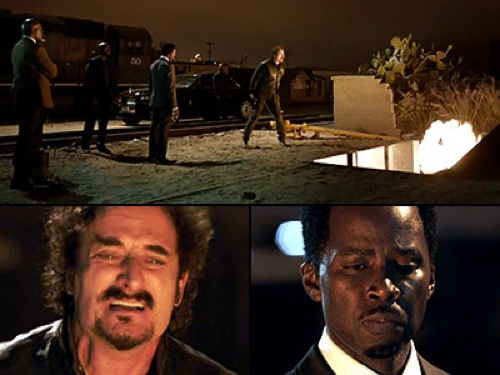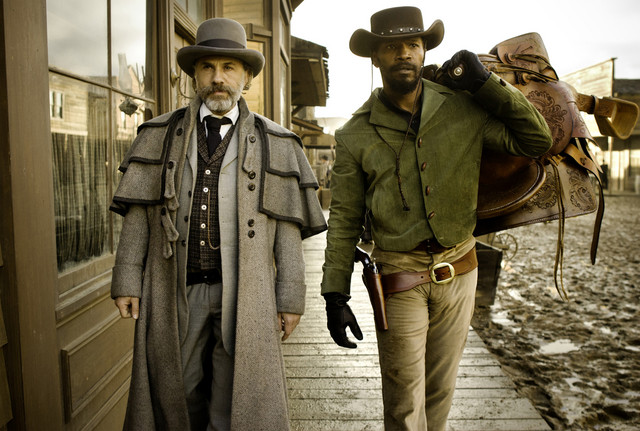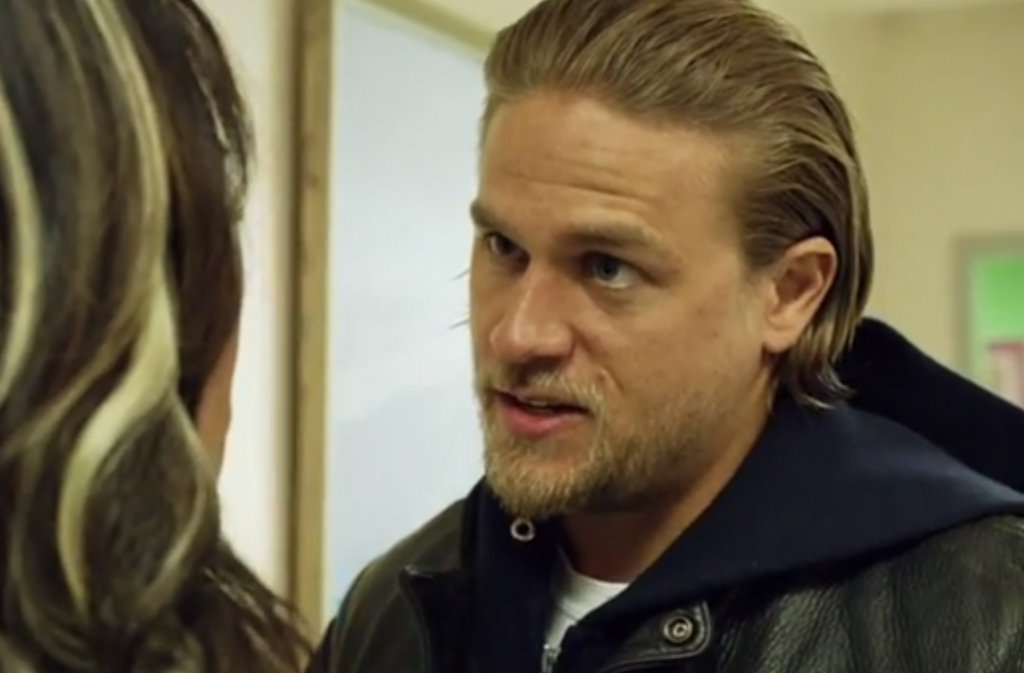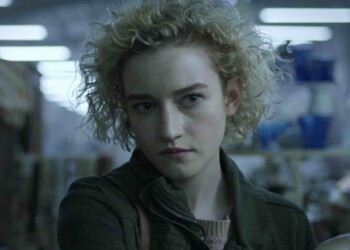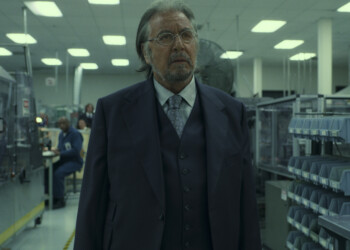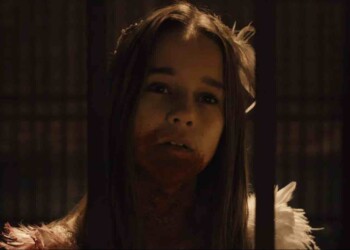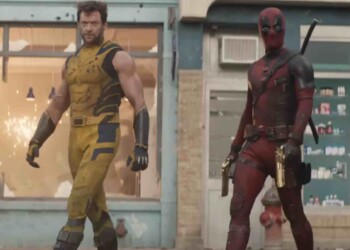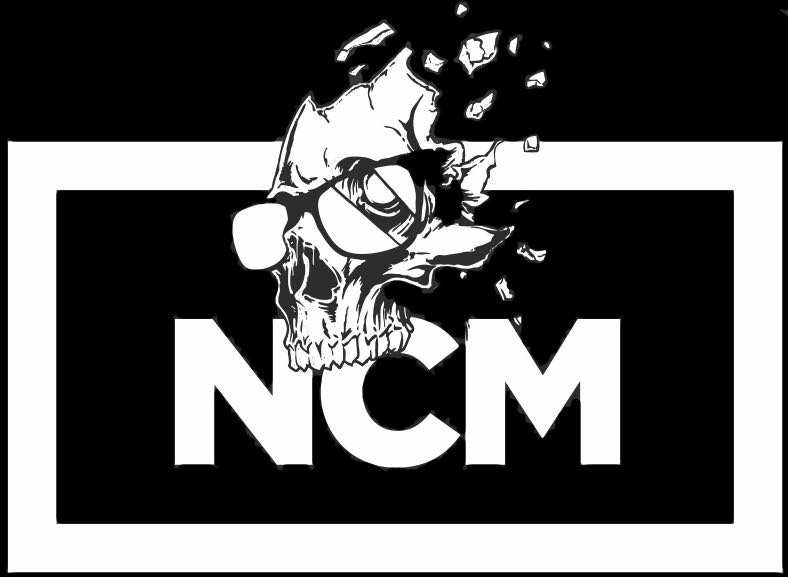Quentin Tarantino has created a universe covered in pulp noir and bloody revenge and if he has an equal on television his name is Kurt Sutter…
By Damon Martin — Editor/Lead Writer
There’s been an argument over the last decade that television has surpassed film in the art of storytelling due to serialized dramas and comedies upping the ante with superior writing and acting, not to mention hours upon hours to explore a character or situation as opposed to a movie where three hours is just about the breaking point before the entire theater gets up to go pee.
It started in many ways with ‘The Sopranos’, which took an age-old story of mobsters in a modern age and turned into a powerhouse series that lasted six seasons with plenty of death, arrests and moral compromise. The only thing missing on ‘The Sopranos’ was an appearance by Joe Pesci, and it would have become the seminal gangster story of the last 25 years (yes, it was even better than Goodfellas).
Now while I believe television is the better market place for creativity these days, there are still filmmakers out there who make can’t miss features every so often. The person I consider to be at the top of the game is writer/director Quentin Tarantino, who not only finds a way to churn out poppy noir crime thrillers but he reinvents the kung-fu movie as easily as he does the cowboy genre. Tarantino is as sharp as a razor with his character development and dialogue while crafting a plot that’s so ludicrous and fantastic it all makes perfect sense.
Now the kind of films Tarantino makes rarely end up on television outside of HBO or Showtime due to the graphic nature of the violence and language he uses not to mention Jamie Foxx’s private parts in at least one movie (hopefully not another one!). Tarantino paints the canvas with blood and motherfuckers like few artists outside of Martin Scorcese can do and do it the right way.
But if there was an equivalent — a challenger on television to the throne of Tarantino — the man who I believe stands up to the task is ‘Sons of Anarchy’ creator Kurt Sutter.
Now it has to be noted that Sutter’s body of work is much smaller than Tarantino’s, especially considering he only has one full show credit to his resume with Sons of Anarchy although he did lead ‘The Shield’ for the final few season after Shawn Ryan first created the series in the early 2000’s. But what Sutter has been able to do in his six-plus years as the lead writer and show runner for the most popular series in FX history rivals many of the same tendencies that Tarantino displays in his films. To be clear, this isn’t a stylistic comparison in terms of the way they shoot their projects, but more of an ambitious approach to filmmaking that makes them two birds of a feather.
So allow me to delve into the ways I believe the House of Sutter sits next to Castle Tarantino in the hierarchy of writing and filming some of the most compelling storytelling in all of entertainment.
Violent Acts, Consequence and Humor in Brutality
The most obvious similarity between Sutter and Tarantino is the uncanny way they have found to cause pain and suffering to a human being on film. Now that might sound like a masochistic complex that needs therapy more than praise, but in the case of these two writer/creators, it’s a massive compliment.
Sutter has found new and disturbing ways to shatter our senses with each season of ‘Sons of Anarchy’ starting with the unexpected and brutal slaying of Opie’s wife Donna early in the series with a machine gun blast right through the back of her head. The scene was revisited two seasons later when Opie got revenge on the ATF agent who indirectly got his wife killed and as he uttered the words ‘this is what she felt’, he pulled the trigger and painted the front of her windshield with a blood spray that looked like a paint bomb going off. It’s easy to point to Tarantino’s use of the same tactic when Vincent Vega ‘accidentally’ pulled the trigger to kill Marvin in the back of the car during the film ‘Pulp Fiction’.
Both writers have spoken openly about using a certain level of absurdity in their filmmaking because at the end of the day this is still fantasy — neither Sutter nor Tarantino are writing from first hand experience or as a ‘how to’ guide for psychopaths. These are stories and in their stories things get bloody and violent and somebody usually dies.
Tarantino enjoys injecting some humor into his scripts with some of the outrageous violence that follows. He also notes that the kinds of films he makes aren’t supposed to be after school specials. They are gritty, crime dramas, martial arts films and in many cases a modern day version of the classic blaxploitation movies of the 1970’s.
“I work in crime films, martial art movies – I guess there’s gonna be a fight or two. In movies, violence can be cool,” Tarantino said in 2009. “I specialize in making you laugh at things that aren’t normally funny. John Travolta turns to the guy in the backseat of the car and accidentally blows his head off. And that is a funny sight gag…you mix darkness with light – it’s a dark script. But you pick Bruce Willis, John Travolta, Uma Thurman that have a light essence, and if you mix that with darkness, you have humor.”
Sutter is no stranger to this tactic as well. In the season premiere for ‘Sons of Anarchy’ last week, there’s a scene in which the motorcycle club and their friends from another group called The Grim Bastards are trying to get some information out of a rival gang leader who could point the finger at the person responsible for running three of their members off the road and nearly killing all of them. When the gang leader (who happens to be wheel chair bound with no legs) refuses to talk, the Sons chain the guy’s wheel chair to the back of a bike and drag him along the street all while slamming into cars and whipping around the back like a bad game of roller derby.
The other key for both Tarantino and Sutter when it comes to violence is the consequence that follows any particular action. On Sons of Anarchy, characters often use guns, knives, cars, bikes and any other range of weapons to cut down an enemy, but that violence never happens without recourse. For instance — when Tig Trager erroneously ran down a group of gang members who he thought were responsible for gunning down the Sons’ president, the following year he watched his daughter get burned alive as punishment. As harsh as that moment may seem, there’s always an action and a reaction whenever something bad goes down in the fictional town of Charming and Sutter makes sure that no act goes without consequence.
“For me, violent and awful things happen on my show but they never happen in a vacuum. There’s always consequence,” Sutter said. “As the series sort of winds down in these last few seasons you see more and more of those consequences because we’re running toward the tape. When you don’t have that sense of responsibility and when you don’t look at the actions of your characters : What’s the reaction to those actions and what are the consequences? Who do they impact emotionally, physically, spiritually, whatever you want to – however you want to look at it.
“That’s when it gets sort of exploitative. That’s when it then just sort of crosses into violence for violence’s sake, and then you get into glamorizing the violence and the shooting and all that stuff – when there is no consequence for that stuff.”
For every action in the worlds of Sutter and Tarantino there is an equal or sometimes greater reaction. Call it the laws of violence.
Interconnected Stories/Actors Between Series/Films
It’s a regular event in a Tarantino movie that actors and actresses will make several appearances throughout his work — Uma Thurman was a star in ‘Pulp Fiction’ and the source for his musings to make ‘Kill Bill’. He’s also crossed over characters in subtle ways such as Vincent Vega in ‘Pulp Fiction’ and his ‘brother’ Vic Vega in ‘Reservoir Dogs’. There’s actually a laundry list of crossover events and characters in Tarantino’s work, which admittedly is far bigger than Sutter’s time between ‘The Shield’ and ‘Sons of Anarchy’.
That said — Sutter has stayed loyal to those that stayed loyal to him both on the script page and on camera.
From his time on ‘The Shield’, Sutter has crossed over as many actors and actresses as possible without calling on original show star Michael Chiklis because as he said ‘it’s too close’ but he was able to wrangle co-star Walton Goggins but had to dress him up as a transsexual prostitute named Venus Van Dam to more or less hide his identity from the audience. Kenny Johnson played a major role in both series as well as CCH Pounder, who is still on the show during the final season. All told, six different regular cast members from ‘The Shield’ have also appeared on ‘Sons of Anarchy’.
As far as characters go, Sons of Anarchy doesn’t have any direct correlation to The Shield outside of a couple of gangs that do manage to crossover between series. The Byz-Lats — the Hispanic gang run by Nero Padilla in Sons of Anarchy was first used during The Shield appearing in season 3 of the show. The One-Niners — a very prominent street gang throughout the entire run of ‘The Shield’ remains a constant presence on Sons of Anarchy as well.
Sutter doesn’t drop as many Easter eggs as Tarantino, but they are still there to be discovered if you look for them.
Oh and one more similarity — they both enjoy starring in their own work. Tarantino has appeared in some form or fashion in almost all of his movies and well who can forget poor Otto the inmate on ‘Sons of Anarchy’.
Racial Lines Explored
Quentin Tarantino has been accused (more than once) of being a white/Caucasian director who is in love with using the ‘N’ word in his films. Director Spike Lee went after Tarantino following the release of his movie ‘Jackie Brown’ when the word was dropped 32 times during the course of the film. He also attacked Tarantino after he made ‘Django Unchained’, which explored the deep South during the 1800’s when slavery was still in full swing.
The reality is Tarantino shines a light on these uncomfortable conversations about race that few writers and directors are willing to do in the context of storytelling. The debate about Tarantino’s race relations got so much attention, Harvard University actually made a course about it titled ‘Race, Racism and Quentin Tarantino’ where the class description reads — “Tarantino’s films have been called the cinema of cool. They are highly stylized, aggressive, violent, and darkly comic. They are also racial, and, if you ask some people, racist. But what is the difference between racist writing and writing racism?”
Sutter also fell under the same auspicious headlines when he wrote a story into the fourth season of ‘Sons of Anarchy’ where a member of the club — Juan Carlos ‘Juice’ Ortiz — is threatened with information being leaked that his father is actually black and not Hispanic. Juice believes if his club finds out about his true parentage, they will not only cast him out but they might kill him for lying to them for all these years.
As Sutter explained in a blog post at the time, he explored this story because these are the kinds of things that actually happened in motorcycle clubs. He wasn’t trying to be insensitive or cruel — just show a side of the world that rarely gets a light shone down upon it.
“There seems to be some confusion about Juice’s discomfort and fear regarding the discovery of his black father,” Sutter wrote. “This is a racial reality in outlaw motorcycle clubs. We’ve touched on the issue lightly over the first three seasons of SOA. The fact is that most of the bigger MC’s do not have African American members. There are black clubs and there are white (Caucasian, Latino, Asian) clubs. Most live in harmony.
“We delve into the delicate why’s and how’s of this racial bi-law later in the season, but it was one of those odd, historical barriers that I’ve wanted to explore. It’s a throwback to a different era that is still in practice today. I can honestly say that none of the guys I know in the life are racist, yet they function within a structure that is built upon a form of segregation. To me, that’s fascinating and fertile story turf.”
Whether you agree with Tarantino or Sutter exploring those racial boundaries, they are two writers willing to delve into that world and not be afraid to attack it head on. Whether it’s slavery or street gangs, there’s nothing these two are saying in a script that hasn’t been said in history — it’s just they are willing to say it on film.
Outlaw Cops and Robbers
For the last decade (give or take) the anti-hero movement has taken over our television screens offering up bad men with a heart of gold. Going back to Tony Soprano for a moment — here was a largely despicable man who cheated on his wife, killed people who crossed him and could arguably be called the worst father in history — yet the character was so complex and three-dimensional that you couldn’t help but root for him in some strange way. Dexter Morgan was a serial killer. Paint the edges however you like that he was killing other violent criminals — he was still doing it illegally and through brutal methods, yet he was a titular character who broke down the walls between vigilante and murderer.
Tarantino embraced the anti-hero a couple of decades ago with both ‘Reservoir Dogs’ and ‘Pulp Fiction’. In both stories the lead characters are largely deplorable, yet somehow you couldn’t help but to like them. Mr. White is almost dismissive when he says he didn’t kill any regular people only cops and Vincent Vega has no problem pumping round after round from his chamber into a young man who crossed his boss when a deal went bad. Still, by the end of the movie, Mr. White was standing off with the real psychopath in the movie (played to criminal perfection by Michael Madsen) and Vincent was sock hopping around Jack Rabbit Slim’s with his boss’s wife. Sure, they were both criminal scumbags, but they were the kind of scum you wanted to quote not kill.
Even when he writes for a member of law enforcement, there’s still a certain level of unrelenting brutality hiding just underneath the surface. Watch the scene in ‘Django Unchained’ where Django is struggling to shoot down a man who is plowing a field with his son all for the sake of collecting a bounty on his head. When Doc Schultz explains the crimes this man committed and that killing him was within their good and legal right, he feels no remorse for cutting him down whether his son was standing nearby or not. Tarantino’s portrayal of over the top cops in ‘True Romance’ is another example of the brash way he writes for law enforcement, but not entirely inaccurate either.
Sutter builds the same kind of universe in ‘Sons of Anarchy’ and while he didn’t create the characters in ‘The Shield’, he certainly helped lead them down a certain path while he was heading up the writing team.
On ‘Sons of Anarchy’, Jax Teller is the latest embodiment of the anti-hero but he’s different than anything Tarantino has written because he has far more layers (another benefit of multi-season storytelling on TV as opposed to movies). He’s a family man who loves his wife and children, but then when he goes out the front door and gets on his Harley, Jax quickly transforms into an unforgiving, unrelenting gangster hell bent on protecting his club, protecting his turf and protecting his friends.
Vic Mackey was a cop who operated outside of the law far more times than he did within the boundaries, but at the end of the day he always got the job done. It was grimy and gritty, but dealing with criminals isn’t supposed to be squeaky clean. Sutter understands that all too well and he’s written them to play to their strengths, their weaknesses and the murky middle part called the grey area. Like Tarantino. Sutter doesn’t see the world in black and white, good guys versus the bad guy. Some heroes are inherently evil and some villains are conflicted by good.
It’s this exploration that make both Sutter and Tarantino great at what they do in every script they product.
Music Fetishist
It would be hard to tell if Quentin Tarantino and Kurt Sutter could exchange iPods and find similar music in each other’s collections, but there’s no doubt these two are some of the most musically inclined writers of the last century.
Tarantino is the master of movie soundtracks and he manages to use songs during certain parts of his films so effectively that the connotation for that particular track changes forever. Can you honestly hear ‘Stuck in the Middle with You’ without thinking of Mr. Blonde dancing around a warehouse with a razorblade in his hand? When was the last time ‘Girl, You’ll Be a Woman Soon’ popped on some radio station and you didn’t immediately think about Mia Wallace dancing around her house until finding Vincent’s stash of heroin? There are literally dozens of examples just like this scattered throughout Tarantino’s work and it’s a brilliant bit of transference that he can take a piece of music not written for his movie and turn it into a soundtrack that so perfectly fits his storytelling.
While Sutter always has his right hand man Bob Thiele helping with the musical selections on ‘Sons of Anarchy’ there’s no denying that he’s also a big fan of the soundtrack for his show.
It seems like almost every season debut and season finale are highlighted by a musical montage intro and/or outro during the episodes. Sutter and his team often employ artists to cover tracks that fit into the chemistry of the show while giving them a modern update for a classic song. Where Tarantino discovered a closet full of soul records from the 1970’s that continuously decorated his early films, Sutter chose to go for a darker, more ominous voice in the form of Jake Smith aka ‘The White Buffalo’, whose vocals have adorned Sons of Anarchy for more songs than any other artist in the catalog.
Smith’s deep baritone voice echoes like a ghost in the night as he bellows out ‘The House of the Rising Sun’ or his own track ‘Matador’. Even in the most recent season debut, Smith sings the opening vocals on the cover song ‘Bohemian Rhapsody’ and he does such an amazing job you’d almost forget that Freddy Mercury was the original (and much different style) vocalist.
Sutter’s passion for music runs so deep that Thiele has even formed a band — The Forest Rangers — that came together for the sole purpose of performing songs that would be featured on ‘Sons of Anarchy’. The series has released several full-length soundtracks and a slew of singles that can be found on iTunes. Sutter even helped to pen the track “Day is Gone’ alongside Thiele and Noah Gunderson, which happened to be the final song played during the emotional season finale last year following the death of Tara Knowles.
And just like Tarantino, Sutter has managed to turn songs into his own muse when employing them during a certain scene for the show. Greg Holden’s track ‘The Lost Boy’ will now and forever be known as the song that played during Opie’s funeral. And who could forget the song ‘Mary’ by Patty Griffin that served as the backdrop during season two when Gemma revealed to her husband and son that she was brutally raped by a white supremacist group several episodes earlier in the year.
It might be interesting to one day see the kind of soundtrack that Sutter and Tarantino could put together if they ever sat down to make the ultimate mix tape.
One Last Thing…
All told there are probably dozens of other similarities between Tarantino and Sutter’s work, but it’s easy to see that these two are brothers in blood both on screen and in scripts. Maybe one day Tarantino will find the right inspiration to do a television show and Sutter will fully commit to a feature film and then we can see what happens when they invade each other’s medium. Until then, these two masters of anarchy are the best of the best at what they do and we’re luckier as film goers and television watchers to have them around.

